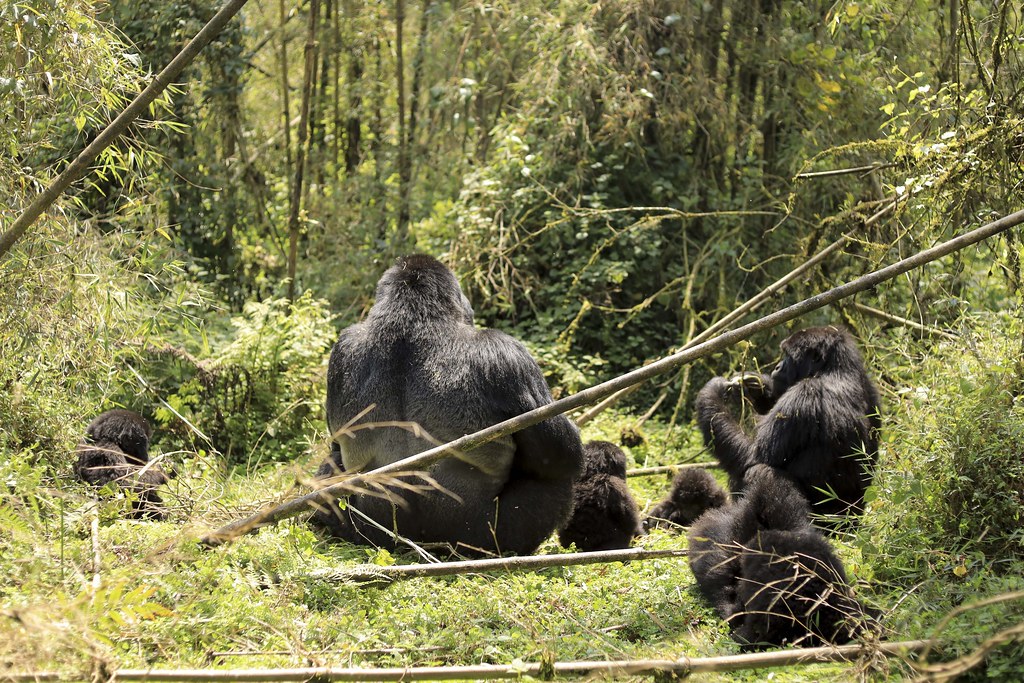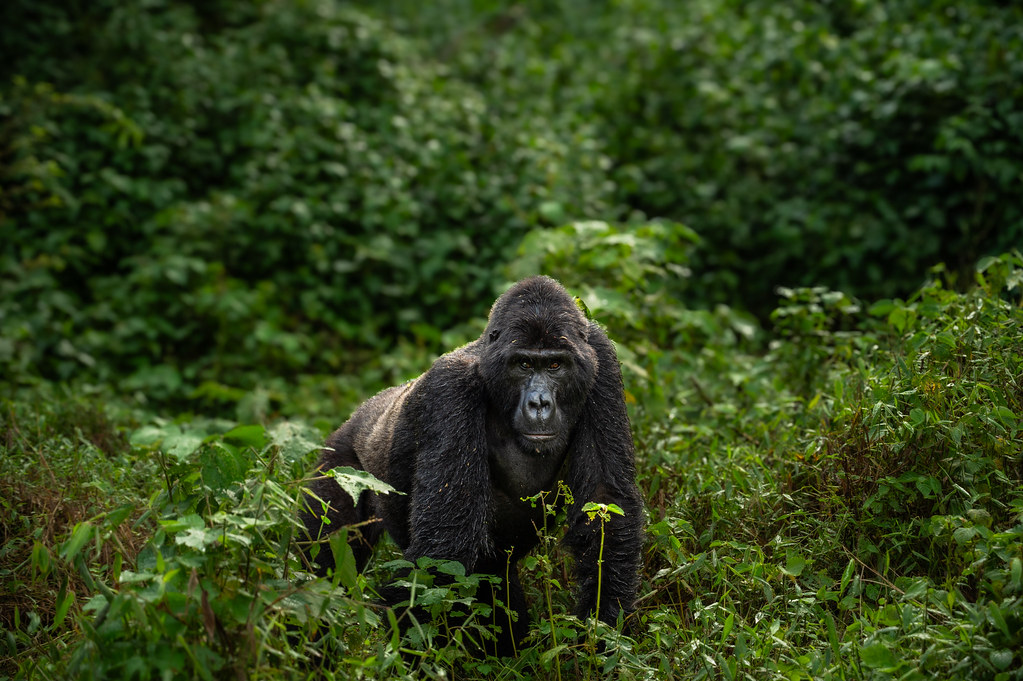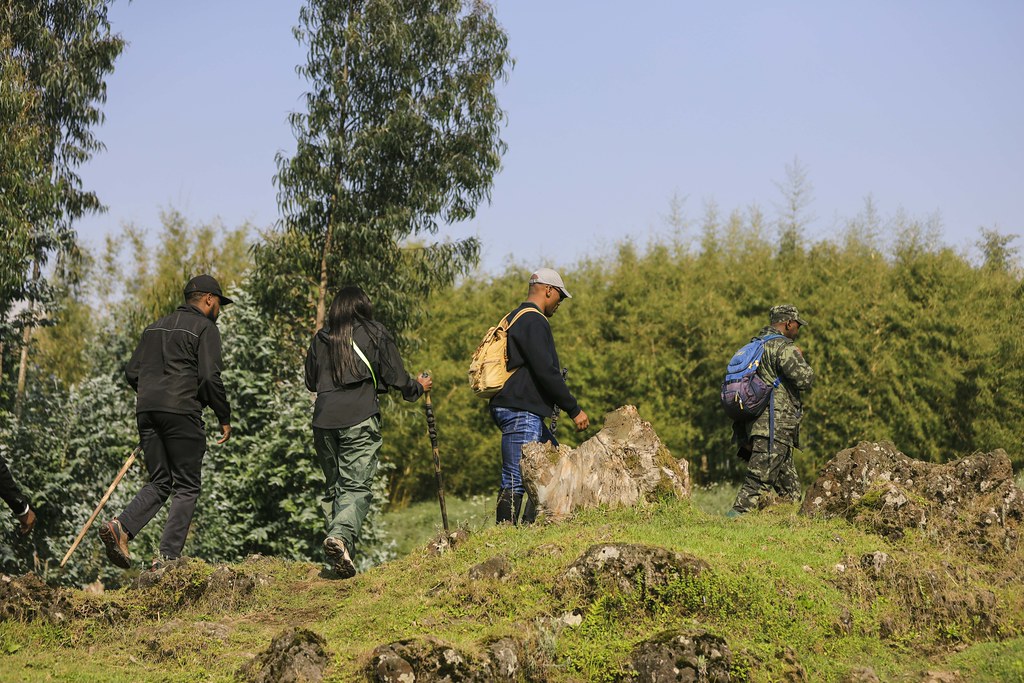Intriguing Insights into Mountain Gorillas in Africa
Why are mountain gorillas endangered — Where do mountain gorillas live — How many mountain gorillas are left — What do mountain gorillas eat — 25 facts about gorillas — How many gorillas are left in the world — Mountain gorilla size — Mountain gorilla weight
There are countless fascinating details about mountain gorillas in Africa.
Mountain gorillas roam the wild expanses of the Virunga Conservation Area and Bwindi Impenetrable National Park.
Three parks come together in the Virunga region: Mgahinga Gorilla National Park in Uganda, Volcanoes National Park in Rwanda, and Virunga National Park in Congo.
They all rest on the rugged slopes of the Virunga Massif Volcanoes.
The prices for trekking mountain gorillas vary across these three countries, but the experience is truly unforgettable.
The cost of a gorilla permit is $800 in Uganda, $400 in Congo, and $1500 in Rwanda.
Incredible Insights into Mountain Gorillas
29 Fascinating Facts About Mountain Gorillas
- Just over 1000 mountain gorillas roam the earth today.
- Male mountain gorillas are heavier than their female counterparts. The males can reach impressive weights of up to 180 kilograms, while the females typically weigh around 90 kilograms.
- At the moment of their arrival, mountain gorilla infants are incredibly fragile, tipping the scales at around 4 pounds. They are lovingly nurtured by their mothers and cling to their backs for up to 3-4 years. They thrive on their mother’s milk until they reach maturity.
- Female mountain gorillas embark on their journey to motherhood at the age of 10, bringing 2-6 offspring into the world throughout their lives. Their gestation period lasts between 8 to 9 months.
- The powerful silverback in a troop orchestrates the daily adventures of the group, taking every measure to shield them from threats, even if it means risking his own life.
- Mountain gorillas embody a quiet strength and a gentle spirit. They unleash their power only when provoked, displaying a fierce and intense demeanor. As they prepare to charge, they emit grunts and roars, pound their chests, rip apart vegetation, and partake in various actions to intimidate any potential threat. In those intense moments, female mountain gorillas fiercely guard their young, showing an unwavering commitment that can lead them to sacrifice everything.
- Mountain gorillas inhabit the breathtaking landscapes of the Virunga Conservation Area and the dense wilderness of Bwindi Impenetrable National Park in Uganda.
- Mountain gorillas boast a remarkable genetic connection to humans, sharing over 98% of their DNA, positioning them as one of our closest relatives alongside chimpanzees.
- Mountain gorillas have a lifespan that can reach up to 54 years. The lifespan of mountain gorillas in the wild differs from that of their counterparts in captivity.
- They struggle to thrive when confined.
- As a male mountain gorilla matures, the hair on its back transforms into a striking silver grey. This is the reason behind their name, Silverbacks.
- Gorillas create cozy nests to settle into for a restful night each evening. They remain in the same nests only during chilly seasons or after a rainfall. They have seamlessly embraced this change.
- Mountain gorillas stand as the largest primates on our planet.
- Mountain gorillas possess a remarkable ability to express emotions, shedding tears when in pain and bursting into laughter when tickled, much like us. They are also full of feelings.
- Mountain gorillas often find themselves in a world where they don’t need to drink water frequently, as more than 90% of their diet is packed with moisture.
- Mountain gorillas possess remarkable intelligence, capable of learning sign language and engaging with humans.
- Male mountain gorillas can devour more than 49 pounds of vegetation daily. The females consume a bit less than the males do.
- Mountain gorillas traverse their environment using all four limbs. Their front limbs are significantly longer and more powerful than the ones at the back.
- Mountain gorillas thrive in dynamic groups ranging from 5 to 30 members, all guided by the strong leadership of a silverback. The group can thrive together for over two decades.
- Mountain gorillas mainly enjoy a plant-based diet, but they occasionally indulge in meat to enhance their meals. This is, however, an uncommon situation for them.
- For reasons that remain a mystery, Mountain gorillas are believed to have a fear of reptiles such as chameleons and caterpillars. Baby mountain gorillas, with their playful curiosity, often find themselves trailing after anything that moves, leading them to encounter caterpillars and chameleons along the way.
- Mountain gorillas thrive in the wild, where their spirit can roam free and their lives are filled with the excitement of their natural habitat. If you encountered gorillas in a zoo, then you likely observed lowland gorillas. Mountain gorillas thrive exclusively in high-altitude mountainous regions.
- Mountain gorillas may not rely on vocal sounds for communication as humans do, but they certainly employ gestures to engage with one another.
- Mountain gorillas engage in mating throughout the year, without a designated season. Babies can arrive at any moment throughout the year.
- Mountain gorillas roam freely in their environment. They embrace a life of constant change and exploration. They are constantly on the move, exploring the world around them in pursuit of food and fruits.
- Mountain gorillas awaken at the break of dawn, around 6 am, embarking on their quest for food. They enjoy a midday rest before resuming their foraging adventures in the afternoon, continuing until 6 pm when they settle down to construct nests and drift off to sleep.
- Mountain gorillas skillfully utilize tools such as stems and branches to uncover insects hidden in the ground or nestled within hollow trees.
- Mountain gorillas face significant threats from human activities such as poaching and the invasion of their natural environments.
- The largest silverback ever documented tipped the scales at 225 kilograms.
Trekking mountain gorillas is an exhilarating journey that promises unforgettable moments.
Few have the opportunity to forge their own memories. Embarking on a journey to trek mountain gorillas typically spans 3-6 hours, influenced by the whereabouts of the gorilla family.
After discovering gorillas, you will have exactly 1 hour to immerse yourself in their world.
Ensure you adhere to the gorilla trekking guidelines before and after embarking on this exhilarating experience in the early morning at each of the designated gorilla parks.



